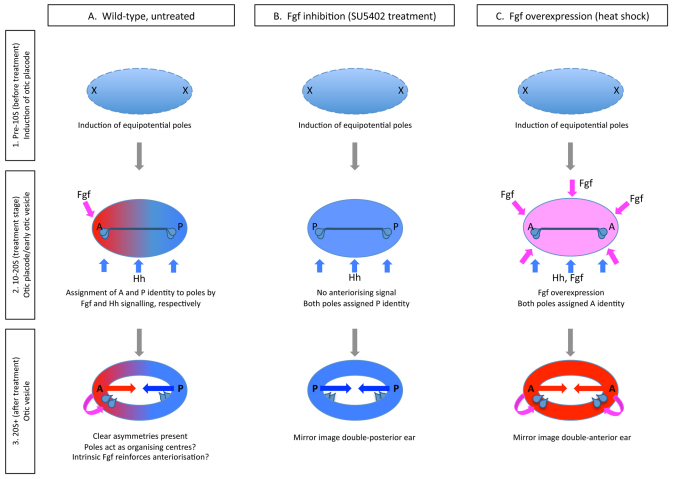Fig. 8.
A three-step model for AP axial patterning in the zebrafish ear. (A) Step 1 (prior to 10S): Induction of a symmetrical otic placode and establishment of equipotential poles. Fgf is required as a placode-inducing factor. Step 2 (10-20S): Direct response of the poles to instructive anteriorising (Fgf, pink) and posteriorising (Hh, blue) factors, with expression of target genes in otic tissue. Step 3 (20S+): The poles of the ear act as intrinsic organising centres, with different anterior (A) and posterior (P) identities. Signalling within the otic vesicle (curved arrow) reinforces initial asymmetry. (B) In the absence of Fgf signalling from 10 to 20S, both poles acquire posterior identity, as both are under the influence of Hh signalling from midline tissues. (C) In transgenic hsp70:fgf3 embryos heat-shocked from 10 to 20S, Fgf signalling is activated in all cells, and both poles acquire anterior identity. The red (anterior) and dark blue (posterior) arrows indicate tissue polarity in each half of the otic vesicle.

